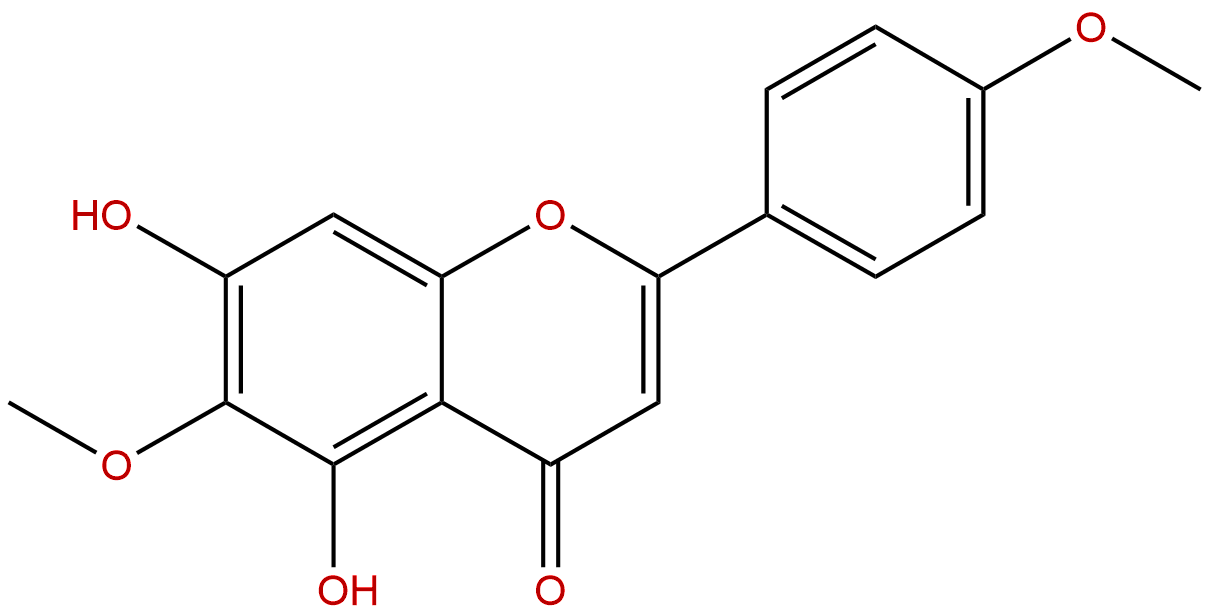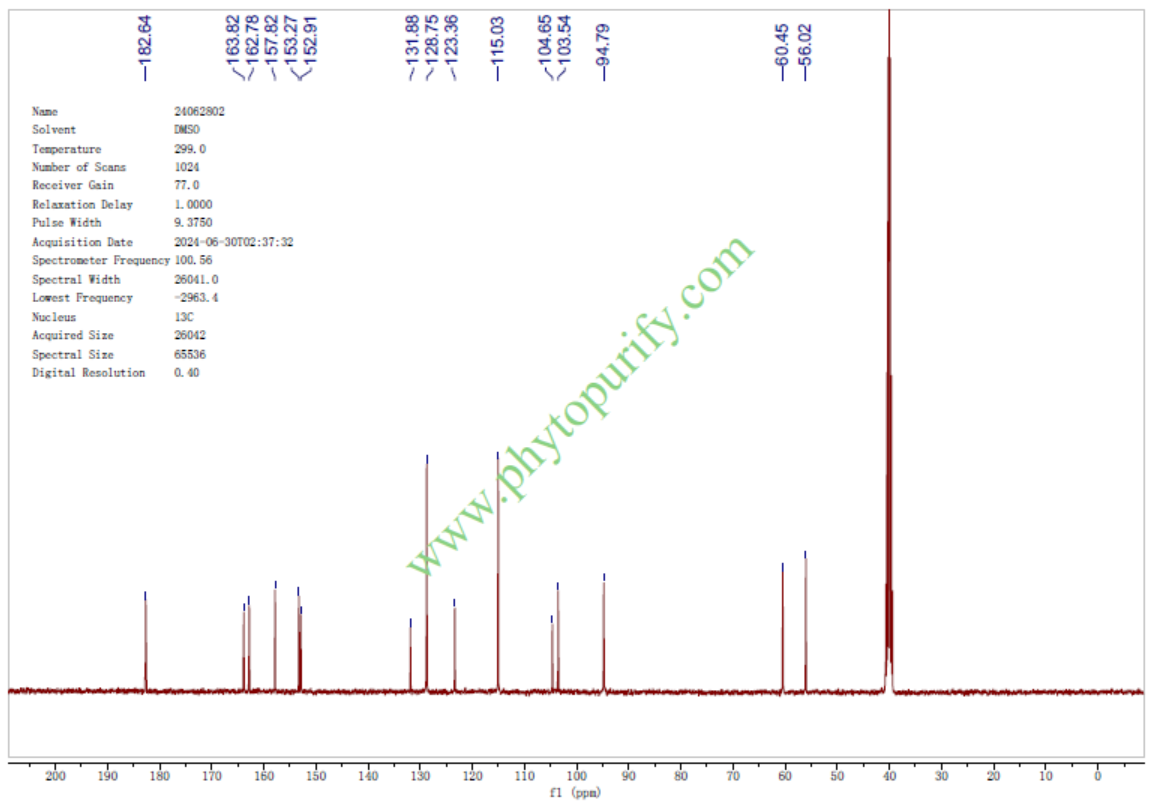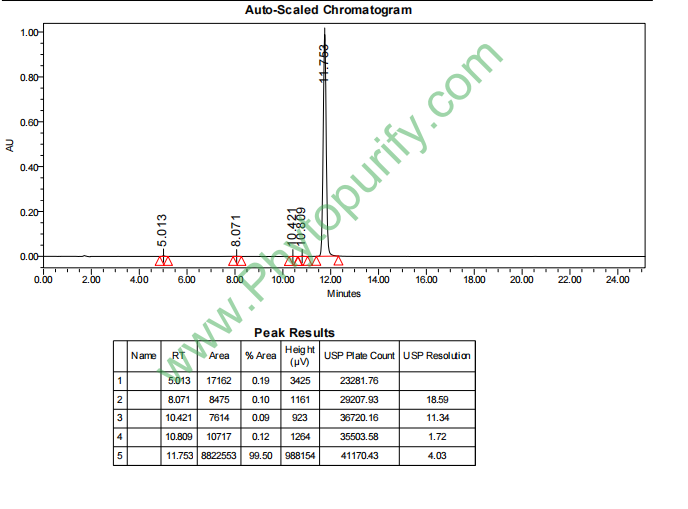
PectolinarigeninCAS No.:520-12-7
|
||||||||||
 |
|
|
||||||||

| Catalogue No.: | BP1069 |
| Formula: | C17H14O6 |
| Mol Weight: | 314.293 |
Product name: Pectolinarigenin
Synonym name: Hortensin
Catalogue No.: BP1069
Cas No.: 520-12-7
Formula: C17H14O6
Mol Weight: 314.293
Botanical Source: Olearia paniculata, Eupatorium semiserratum, Millingtonia hortensis and many other plants
Physical Description: Yellow powder
Type of Compound: Flavonoids
Purity: 95%~99%
Analysis Method: HPLC-DAD or/and HPLC-ELSD
Identification Method: Mass, NMR
Packing: Brown vial or HDPE plastic bottle
Storage: Store in a well closed container, protected from air and light. Put into refrigerate or freeze for long term storage.
Whenever possible, you should prepare and use solutions on the same day. However, if you need to make up stock solutions in advance, we recommend that you store the solution as aliquots in tightly sealed vials at -20℃. Generally, these will be useable for up to two weeks.
The product could be supplied from milligrams to grams, up to kilograms
Inquire for bulk scale.
Descriptions:
Pectolinarin and pectolinarigenin exhibit hepatoprotective activity mainly via SOD antioxidant mechanism, can prevent the hepatic injury in rats caused by D-galactosamine.[1]
Pectolinarigenin and pectolinarin possess anti-inflammatory activity and that they may inhibit eicosanoid formation in inflammatory lesions. [2]
Pectolinarigenin inhibits breast cancer stem cell-like properties and lowers the chemoresistance of the cancer cells to chemotherapy, the results provide an insight into the mechanism of the anti-breast tumor effects and an experimental basis for the use of pectolinarigenin to enhance treatment of patients with breast cancer.[3]
Pectolinarigenin shows potent anti-proliferation activity by inducing apoptosis and downregulation of Bcl2 expression in MCF-7 breast cancer cell; protein expression of Bcl2 is almost completely inhibited upon the treatment with 25 mM pectolinarigenin. [4]
References:
[1] Yoo Y M, Nam J H, Kim M Y, et al. Biol Pharm Bull, 2008, 31(4):760-4.
[2] Lim H, Son K H, Chang H W, et al. Biol Pharm Bull, 2008, 31(11):2063-7.
[3] Lu M, Xu X, Lu H, et al. Tropi J Pharm Res, 2016, 15(3):547-53.
[4] Lu M, Kong Q, Xu X, et al. Tropi J Pharm Res, 2014, 13(2):225-8.
[5] Sakpakdeejaroen I, Juckmeta T, Itharat A. J Med Assoc Thai. 2014 Aug;97 Suppl 8:S76-80.
NMR of Pectolinarigenin

HPLC of Pectolinarigenin
